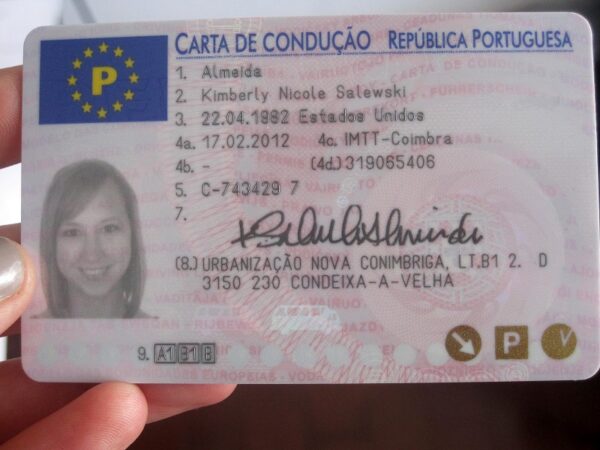Where Can You Find The Top Driving Test Information?

Understanding the Driving Test: A Comprehensive Guide
Starting the journey to get a motorist's license is an amazing yet difficult experience for many. The driving test, often thought about the pivotal point in this journey, assesses a prospect's capability to operate an automobile securely and responsibly. In this detailed guide, we will explore the intricacies of the driving test, covering its function, structure, requirements, and tips for success. We will also deal with regularly asked questions to additional clarify the process.
The Purpose of the Driving Test
The driving test serves several essential functions:
- Safety Assurance: The primary objective of the driving test is to guarantee that motorists can operate automobiles safely. This is paramount in preventing accidents and making sure road safety for both motorists and pedestrians.
- Evaluation of Knowledge: The test evaluates a prospect's understanding of traffic laws, roadway signs, and safe driving practices.
- Skill Evaluation: Beyond theoretical knowledge, it examines useful driving abilities, consisting of maneuverability, parking, and adherence to traffic guidelines.
- Regulatory Compliance: Each area has particular laws governing lorry operation. The driving test ensures that all chauffeurs are mindful of and comply with these policies.
Structure of the Driving Test
While the particular structure of driving tests might differ by state or nation, they normally follow a typical format, which can include the following components:
1. Written Knowledge Test
Before hitting the roadway, prospects typically must pass a composed knowledge test, that includes:
- Traffic Signs and Signals: Identifying various indications and signals, understanding their significances and suitable actions.
- Road Rules: Questions on speed limits, right-of-way guidelines, and actions to take in various traffic situations.
- Risk Awareness: Scenarios to assess a candidate's capability to acknowledge and react to potential roadway dangers.
2. Vision Test
A vision test makes sure candidates can sufficiently see to drive. Prospects are typically asked to check out letters or numbers from a range, ensuring they meet the vision requirements set by regulatory authorities.
3. Road Test
The most significant element is the practical roadway test. Cartão Expresso De Portugal is where prospects show their abilities under the observation of a certified examiner. The road test typically consists of:
- Pre-Drive Checklist: Checking mirrors, seat belts, and environments before starting.
- Basic Maneuvers: Performing tasks such as parallel parking, turning, and lane modifications.
- Traffic Interaction: Navigating through traffic, complying with speed limits, and yielding the right-of-way.
- Emergency situation Situations: Demonstrating how to react to unforeseen roadway scenarios.
Table: Typical Driving Test Components
| Component | Description |
|---|---|
| Written Knowledge Test | Multiple-choice exam covering road guidelines and indications |
| Vision Test | Ensuring candidate satisfies minimum vision requirements |
| Road Test | Practical evaluation of driving skills in real traffic situations |
Requirements for Taking the Driving Test
Before a prospect can arrange their driving test, there are specific prerequisites that generally require to be satisfied, including:
- Age Requirements: Many areas have minimum age requirements (e.g., 16 or 18 years old).
- Knowing Permit: Candidates typically need to have actually held a student's permit for a specified duration (commonly 6 months to a year).
- Motorist Education Course: Some regions need completion of a chauffeur's education course, which might include both class and useful training.
- Documents: Candidates need to present valid recognition, proof of residency, and any finished documentation required by the regional Department of Motor Vehicles (DMV) or equivalent authority.
(FAQs) Frequently Asked Questions
Q1: How do I schedule my driving test?
A1: Candidates can normally schedule their driving tests through the website or workplace of their local DMV or licensing authority. Online reservation choices are often offered for benefit.
Q2: What should I cause the day of my driving test?
A2: Candidates must bring their learner's license, documents proving residency, proof of recognition, and a roadworthy car. Additionally, any forms supplied during the scheduling should likewise be brought along.
Q3: What takes place if I fail my driving test?
A3: If a candidate fails the driving test, they are usually permitted to retake it after a waiting duration, which can vary from days to weeks, depending upon the region's policies. It's suggested to practice the abilities that require improvement before retaking the test.
Q4: How long is the driving test?
A4: The period of a driving test can differ but usually lasts in between 20 to 30 minutes, depending on the intricacy of the path and the particular requirements set by the screening authority.
Tips for Success
Preparation is essential to passing the driving test. Think about the following tips:
- Practice: Regularly practice driving in different conditions and scenarios to grow comfy behind the wheel.
- Know the Laws: Familiarize yourself with regional traffic laws, indications, and regulations to carry out well on the composed test and roadway test.
- Take a Mock Test: Have a knowledgeable chauffeur accompany you for a practice test to mimic the actual experience and supply constructive feedback.
- Stay Calm: On the day of the test, try to stay calm and collected. Stress and anxiety can impede performance, so practice relaxation methods ahead of time.
- Use Clear Signals: During the road test, make sure to use proper signaling and inspect mirrors frequently. Clear communication with other roadway users is important.
The driving test is an essential step in acquiring a motorist's license and guaranteeing road safety. By understanding its structure, preparing properly, and keeping typical inquiries in mind, prospects can approach the driving test with confidence. Whether it's the written knowledge exam or the practical driving assessment, persistent preparation and a calm attitude are elements that can considerably affect success on the roadway.

